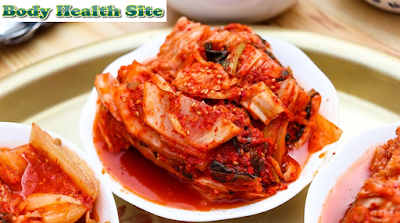Lactic Acid Fermented Foods
Lactic acid fermentation is one method for producing and preserving certain foods so that they can be stored for later consumption. This fermentation itself does not require heat or expensive preparation, so it is preferred over other methods. Lactic acid bacteria that play a role in the fermentation process generally can develop well in processed foods. With this fermentation, the pH of the food will drop to a number that makes other organisms unable to develop.
Several microbes such as several species of Lactobacillus, Bifidobacterium sp, and several other lactic acid bacteria are useful in making probiotic products. For example, lactic streptococci and Leuconostocs reduce their pH to 4.5 to 4. Also, carbon dioxide produced by heterofermentative lactobacilli has a preservative effect on food.
This lactic acid fermentation was chosen to preserve food for several reasons:
- It does not require high costs compared to food freezing or canning.
- Enrich the taste of food.
- It only requires a little energy to process and prepare food to be consumed.
- The results are liked by many people.
Lactate Fermented Foods
Lactic acid fermented foods are known to be healthy because they contain good bacteria, thus preventing the growth of other bacteria that can cause disease and the development of toxins in food. Often, this fermentation also increases the nutritional content of food. Therefore, let's get to know some foods that go through that process.
- Kimchi
Kimchi is a typical Korean meal consisting of fermented vegetables and herbs. This food is made from cabbage, turnips, garlic, ginger, mustard leaves, pepper, chili, carrots, and leeks. This food is usually consumed together with rice and other dishes. The optimal concentration of salt in fermented kimchi is around 3%, with a temperature of around 10 degrees Celsius. The optimal acidity of kimchi is 0.4-0.8% lactic acid with a pH between 4.2-4.5. Isolated organisms include L. mesenteroides, S. faecalis, Lb. brevis, Lb. plantarum, and P. cerevisiae.
Kimchi is called a healthy food because it contains vitamin C. The benefits of kimchi are widely studied, both from the ingredients and the substances resulting from fermentation. Such as cabbage and garlic which have antitumor effects, as well as the fiber content in kimchi which can prevent constipation and colon cancer. The probiotic effect of kimchi itself is good for helping the digestive process.
- Tempe (Fermented Soybean)
Lactic acid fermentation also plays an important role in the production of Indonesian fermented soybean. The soft texture of fermented soybean is actually obtained from the fermentation of the fungus Rhizopus oligosporus making it easier to shape and slice. During the initial immersion, the pH drops from around 6.5 to between 4.5 and 5.0. This is where lactobacilli play an important role, this low pH prevents the development of bacteria that can damage fermented soybean and facilitates the growth of fungi. Vitamin B12 in tempeh arises because of the fermentation process of bacteria. The fermentation process in making tempeh also helps reduce levels of phytic acid in soybeans so that it can increase the levels of minerals that can be absorbed by the body.
- Miso and soyu
Miso and soyu are Japanese food seasonings resulting from the fermentation of the fungus Aspergillus oryzae. During the fermentation process, Lactobacilli grows and lowers the pH to around 4.5 which then produces some ethanol that blends with organic acids, and produces a distinctive taste and aroma.
- Yogurt
Yogurt is a probiotic food made from milk fermented with good bacteria, especially lactic acid bacteria and bifidobacteria. These foods are said to reduce the risk of diarrhea due to antibiotics, help relieve symptoms of irritable bowel syndrome, improve bone health, and are beneficial for high blood pressure patients. Bacteria that convert some lactose to lactic acid make this food safer for people with lactose intolerance.
- Pickles
Pickles are generally made from cucumbers that have been soaked in a mixture of water and salt, fermented for some time, and taste sour. Sour taste arises due to lactic acid bacteria that grow naturally. Besides being rich in probiotic bacteria, pickles are a low-calorie source of vitamin K. However, pickles made using vinegar do not contain live probiotics.
In addition to the foods above, other foods and drinks processed by lactic acid fermentation include sauerkraut (chopped cabbage), kefir (fermented probiotic milk drink), kombucha (fermented black or green tea), and several types of cheese.


Post a Comment for "Lactic Acid Fermented Foods"